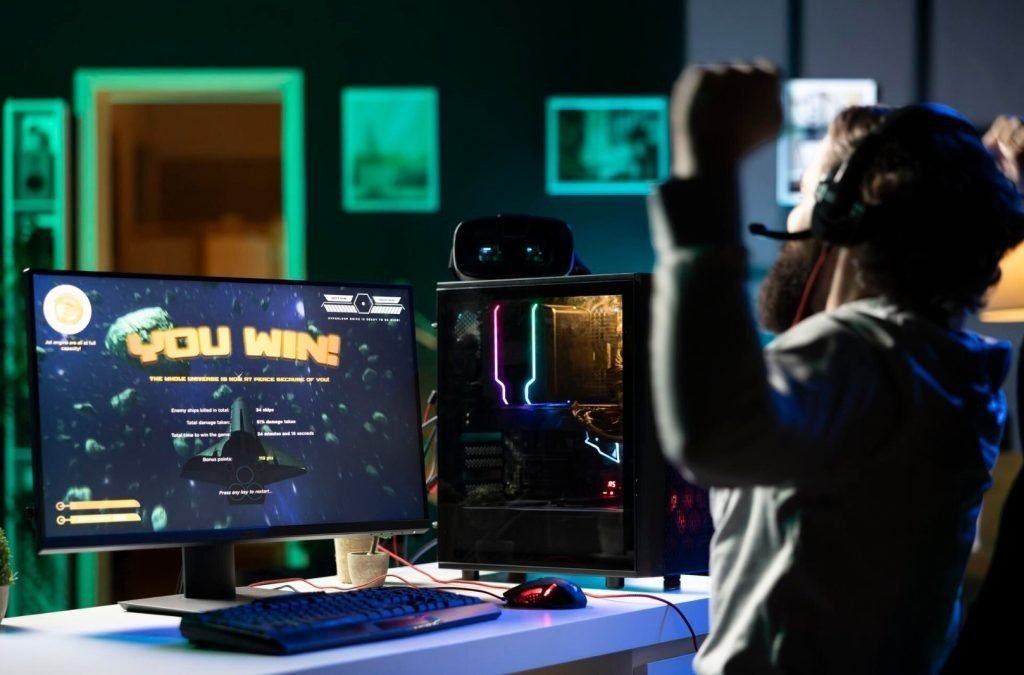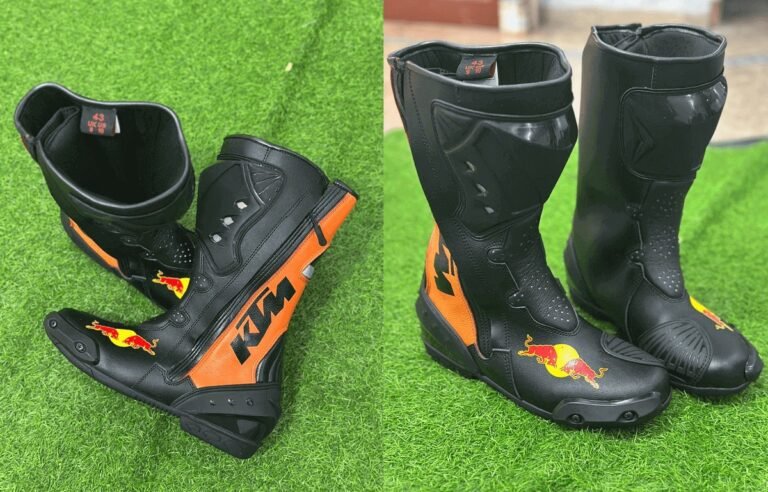Blog Gaming DualMedia: The Future of Interactive Digital Entertainment
Introduction
In the modern digital age, gaming has evolved far beyond being just a pastime. It has become a global cultural phenomenon, blending with other media forms to create immersive, community-driven, and content-rich experiences. Among the most exciting trends shaping this transformation is Blog Gaming DualMedia — a hybrid approach that merges traditional blogging with interactive gaming media.
This innovative concept reflects how players, streamers, and content creators are redefining how we consume and engage with gaming content. Blog Gaming DualMedia symbolizes a new age of content where storytelling, gameplay, reviews, and multimedia experiences coexist in a single digital ecosystem.
In this comprehensive article, we will explore what Blog Gaming DualMedia means, how it works, its impact on content creation, and why it is transforming the online gaming world.
ABOUT INFORMATION : Maderbot
Understanding Blog Gaming DualMedia
What Is Blog Gaming DualMedia?
Blog Gaming DualMedia refers to the integration of blogging and gaming media into one cohesive platform or content strategy. It’s a dual-content model where written storytelling (blogs, guides, reviews) intersects with multimedia formats (videos, streams, podcasts, and gameplay footage).
This dual-format approach allows gaming creators and enthusiasts to engage audiences through both narrative and visual experiences. For instance, a gaming blogger may write an article about a new release while embedding live gameplay, reaction videos, or podcasts discussing game mechanics — all in one post.
The “Dual” Aspect of DualMedia
The word “DualMedia” represents the fusion of two major content types:
- Textual Media: Blog articles, walkthroughs, news, analysis, and opinion pieces.
- Visual/Interactive Media: Videos, live streams, infographics, and interactive tools.
By combining these two media forms, creators can deliver comprehensive gaming experiences that appeal to both readers and viewers, catering to different learning and engagement preferences.
The Evolution of Gaming Blogs
From Simple Reviews to Multimedia Experiences
In the early 2000s, gaming blogs primarily featured written reviews, walkthroughs, and cheat codes. Readers relied on text-based content to learn about new games or discover gameplay strategies.
However, as technology evolved, platforms like YouTube, Twitch, and TikTok reshaped how gamers consumed content. Audiences began to favor interactive, visual, and dynamic experiences. Traditional blogs had to adapt — and thus emerged the DualMedia format, blending the depth of blogs with the engagement power of visual media.
Blogging in the Age of Interactivity
Today’s gaming blogs are no longer just static pages of text. They are interactive digital ecosystems featuring embedded gameplay, tutorials, commentary videos, and real-time community discussions. Blog Gaming DualMedia has become the backbone of this new wave of immersive storytelling and content creation.
Key Components of Blog Gaming DualMedia
To understand how Blog Gaming DualMedia works, let’s break down its primary components:
1. Blogging Component
The blogging aspect includes:
- Game reviews and critiques
- How-to guides and walkthroughs
- Industry news and updates
- Game development insights
- Opinion pieces and community posts
This written content establishes credibility, improves SEO, and provides valuable, searchable information.
2. Multimedia Integration
Multimedia adds a second dimension through:
- Video gameplay clips
- Twitch or YouTube live streams
- Podcast interviews with gamers
- Interactive polls or infographics
- Screenshots and animations
This component enhances engagement and creates a richer user experience.
3. Community Interaction
DualMedia thrives on audience participation. Readers become contributors through:
- Comments and feedback
- User-submitted content
- Collaborative reviews
- Social media integration
This interactive culture transforms passive readers into active participants, building a loyal community.
The Role of Technology in DualMedia
1. CMS Platforms and Plugins
Modern content management systems (CMS) like WordPress, Ghost, or Medium support the DualMedia model with multimedia embedding tools and SEO optimization plugins. Bloggers can easily integrate video players, podcast feeds, or interactive charts into their posts.
2. Streaming and Video Tools
Software like OBS Studio, Streamlabs, and DaVinci Resolve help content creators produce professional-quality gaming videos. When combined with blogs, these tools bridge the gap between written and visual storytelling.
3. AI and Automation
AI tools now assist creators with generating summaries, transcriptions, or video captions. AI-driven analytics also help track reader engagement, optimize content formats, and suggest personalized topics — all crucial for sustaining a DualMedia blog.
Strategies for Creating a Successful Blog Gaming DualMedia Platform
1. Define Your Niche
Focusing on a niche builds a targeted audience. Examples include:
- RPG game reviews
- Esports coverage
- Indie game development
- Console vs PC gaming
- Retro gaming culture
Choosing a niche ensures consistent topics and a loyal readership.
2. Maintain Quality and Consistency
Both written and multimedia content should maintain high standards:
- Write SEO-optimized, human-centered articles
- Use HD visuals and clean audio
- Update regularly to maintain relevance
3. Encourage Interaction
Include comment sections, forums, or social media communities. Engage with your readers by responding to comments, hosting Q&A sessions, or organizing contests.
4. Leverage Cross-Platform Promotion
Promote your DualMedia blog across:
- YouTube
- Twitch
- X (formerly Twitter)
- Reddit
- Discord communities
Cross-promotion helps attract both readers and viewers.
5. Invest in Branding
A recognizable logo, color scheme, and tone of voice help establish your identity. Strong branding enhances recall and professionalism.
Examples of DualMedia in Action
1. GameSpot and IGN
Sites like IGN and GameSpot have evolved into DualMedia platforms by blending text reviews with embedded gameplay videos, trailers, and interactive elements. Readers can consume the same content in multiple formats.
2. YouTube Gaming Blogs
Many YouTubers also run companion blogs where they publish written breakdowns of their video content. This combination boosts visibility across both search engines and video platforms.
3. Independent Creators
Independent gaming bloggers often use WordPress + YouTube integrations to publish in-depth guides supported by demonstration videos. This model exemplifies the power of DualMedia for small creators.
The Role of Social Media in Blog Gaming DualMedia
Social media acts as an extension of DualMedia. Platforms like TikTok, Instagram Reels, and X enable micro-content distribution — short clips, quotes, and highlights — that link back to long-form blog content.
Social networks also facilitate community growth, driving discussions around articles or gameplay topics and encouraging followers to become regular readers.
Challenges of Blog Gaming DualMedia
While promising, the DualMedia approach comes with its own challenges:
1. Time and Resource Intensive
Producing high-quality blog posts and multimedia content requires planning, equipment, and time. Consistent publishing can be demanding for solo creators.
2. Technical Skills
Creators must understand web design, SEO, and multimedia editing tools to maintain performance and accessibility.
3. Platform Limitations
Some blogging platforms limit file sizes or video embeds, making integration trickier. Creators often need external hosting solutions for smooth multimedia delivery.
4. Competition
As more creators adopt DualMedia strategies, standing out requires creativity, authenticity, and niche specialization.
The Future of Blog Gaming DualMedia
The future looks bright for Blog Gaming DualMedia as technology continues to advance. Here are a few trends shaping its evolution:
Virtual Reality (VR) Blogging
VR integration will allow readers to experience games firsthand through immersive blog features or embedded VR gameplay.
Interactive AI-Powered Posts
AI chatbots or virtual guides may help readers navigate content, answer questions, or even provide live commentary inside a blog.
Blockchain and NFT Integration
Gamers could own digital collectibles tied to blog content, such as exclusive artwork, early access videos, or premium insights.
Community-Driven Storytelling
Future DualMedia blogs may include user-generated sections where fans contribute stories, reviews, or game mods, creating collaborative ecosystems.
Tips for New Creators Entering Blog Gaming DualMedia
- Start Small: Focus on one or two platforms before expanding.
- Use Free Tools: Begin with WordPress, OBS Studio, and Canva.
- Study Analytics: Use Google Analytics and YouTube Insights to track engagement.
- Collaborate: Partner with other gamers, streamers, or developers to cross-promote.
- Stay Authentic: Build credibility by sharing genuine opinions and experiences.
Impact on the Gaming Industry
Blog Gaming DualMedia has reshaped how developers market their games and how audiences engage with them.
- Developers benefit from richer reviews that combine visuals and text.
- Gamers gain access to immersive, educational content.
- Brands leverage DualMedia blogs for influencer collaborations and promotions.
This interconnected ecosystem has made the gaming community more dynamic, transparent, and interactive than ever before.
Conclusion
Blog Gaming DualMedia is not just a trend — it’s the future of gaming content creation. By combining the depth of blogging with the engagement of multimedia, it transforms how gamers consume, learn, and connect with the digital world.
As technology advances and creators continue to innovate, Blog Gaming DualMedia will remain a powerful medium that bridges storytelling, interactivity, and entertainment.
Whether you’re a gaming enthusiast, blogger, or digital marketer, embracing this dual-content approach offers endless opportunities to reach audiences, share passion, and shape the next generation of gaming culture.






